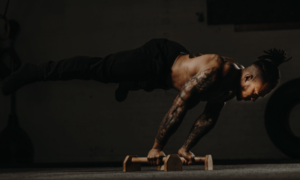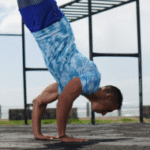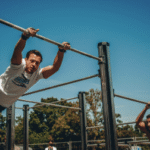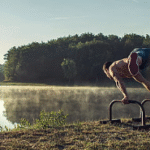Improve Circulation and Reduce Swelling with Contrast Therapy
Contrast therapy, the strategic alternation between hot and cold temperatures, is a powerful technique for improving circulation and reducing swelling. This method leverages the body’s natural physiological responses to temperature changes, resulting in a “pumping” action that promotes healing and overall well-being. Here’s a detailed exploration of how contrast therapy achieves these benefits:
Understanding the Physiological Mechanisms
Contrast therapy’s effectiveness lies in its ability to induce alternating periods of vasodilation and vasoconstriction.
Vasodilation (Heat):
When exposed to heat, such as in a sauna, hot bath, or hot shower, blood vessels expand (dilate).
This dilation increases blood flow to the treated area, delivering oxygen and nutrients crucial for tissue repair and healing.
Heat also helps relax muscles, reducing tension that can impede circulation.
Vasoconstriction (Cold):
Conversely, cold exposure, such as in a cold plunge or ice bath, causes blood vessels to narrow (constrict).
This constriction reduces blood flow to the area, minimizing inflammation and swelling.
Cold also numbs nerve endings, providing pain relief.
The “Pumping” Effect:
The rapid alternation between vasodilation and vasoconstriction creates a “pumping” action within the circulatory system.
This pumping effect helps to:
Flush out metabolic waste products, such as lactic acid, which can accumulate in tissues after exercise or injury.
Promote lymphatic drainage, which plays a vital role in removing excess fluid and toxins from the body.
Improve the delivery of fresh, oxygenated blood to the tissues.
Benefits for Circulation and Swelling
Improved Blood Flow:
Contrast therapy enhances blood circulation, ensuring that tissues receive adequate oxygen and nutrients for optimal function and healing.
This is particularly beneficial for individuals with poor circulation or those recovering from injuries.
Reduced Inflammation and Swelling:
Cold therapy effectively reduces inflammation and swelling by constricting blood vessels and limiting the influx of inflammatory substances.
This is valuable for managing acute injuries, such as sprains and strains, as well as chronic inflammatory conditions.
Enhanced Lymphatic Drainage:
The “pumping” action of contrast therapy stimulates lymphatic drainage, helping to remove excess fluid and toxins from tissues.
This can reduce swelling and improve overall lymphatic function.
Faster Recovery:
By improving circulation and reducing inflammation, contrast therapy can accelerate the recovery process after exercise or injury.
This allows individuals to return to their activities sooner.
Pain Relief:
Cold therapy has analgesic effects, numbing nerve endings and providing temporary pain relief.
The reduction of swelling also reduces pain.
Reduced Edema:
Edema, or excess fluid retention, can be greatly reduced using contrast therapy. The pumping action helps to move the fluids out of the effected extremities.
How to Perform Contrast Therapy
Heat Exposure:
Begin with 10-15 minutes of heat exposure, such as a hot shower, hot bath, sauna, or hot pack.
Cold Exposure:
Immediately follow with 1-5 minutes of cold exposure, such as a cold shower, cold plunge, ice bath, or cold pack.
Repeat Cycles:
Repeat the hot and cold cycles 2-3 times, ending with cold exposure.
Rest Period:
Allow for a brief rest period between cycles to allow the body to adjust.
Practical Considerations
Temperature:
The hot phase should be warm but not scalding (around 100-110°F or 38-43°C).
The cold phase should be cold but not freezing (around 50-59°F or 10-15°C).
Time:
The duration of each phase can be adjusted based on individual tolerance and preferences.
Beginners should start with shorter durations and gradually increase the time.
Safety:
Consult with a healthcare professional before starting contrast therapy, especially if you have any underlying health conditions,1 such as cardiovascular disease, high blood pressure, or cold sensitivity.
https://calisthenicsclubhouston.com/nordic-cycle/
Avoid contrast therapy if you have open wounds or skin infections.
Stop if you feel light headed, or dizzy.
Incorporating Contrast Therapy into a Routine
Contrast therapy can be performed after exercise, injury, or as part of a regular wellness routine.
It can be combined with other recovery methods, such as stretching, massage, and rest.
Consistency is key; regular use of contrast therapy can lead to significant improvements in circulation and swelling reduction.

Improve Circulation and Reduce Swelling with Contrast Therapy
Route
Calisthenics Gym Houston Functional Bodyweight Training
Secondary phone: (346) 483-3195
Email: info@calisthenicsclubhouston.com
URL: https://calisthenicsclubhouston.com/
Monday 6:00 AM - 7:00 PM Tuesday 6:00 AM - 7:00 PM Open now Wednesday 6:00 AM - 7:00 PM Thursday 6:00 AM - 7:00 PM Friday 12:00 PM - 6:30 PM Saturday 9:45 AM - 12:00 PM Sunday 3:00 PM - 5:00 PM





